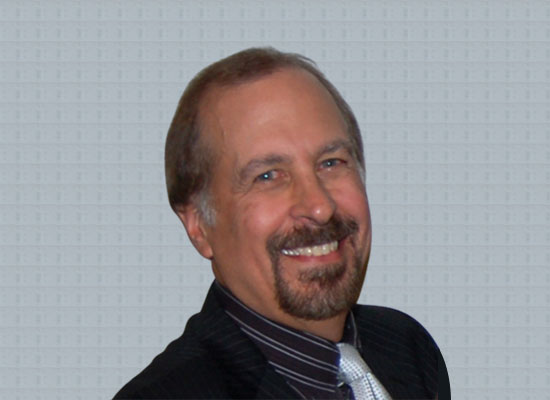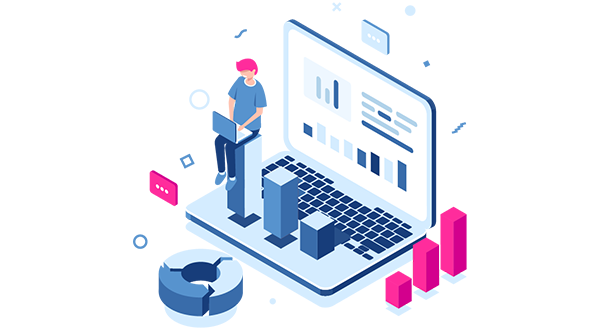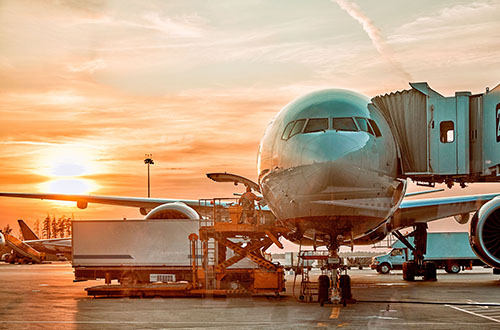

mLogica Thought Leaders: The Key to IT Modernization? Managing Expectations While Embracing Change

Dale Vecchio, mLogica Group V.P. of Marketing and Strategy
“Life is so constructed, that the event does not, cannot, will not, match the expectation.”
Charlotte Bronte
IT modernization projects are often sold based on great expectations, perhaps TOO great. Organizations must have the courage of their convictions, but defining reasonable results is key! Mainframe modernization is a continuum. It’s important to set expectations at the outset that results will be achieved as the journey down the modernization path is traversed.
Over-promising and under-delivering is a sure path to failure and likely to reduce your team’s courage to stick with the initiative. Defining a journey that reduces the risks of each step, while continuing the modernization progress sets your organization up for success and builds confidence that the project’s goals are achievable.
Overcoming the Limitations of a Closed Mindset
The journey of IT modernization begins by fighting the demons associated with change. Much of the hesitancy to modernize aging legacy applications and infrastructure is a result of a great fear of failure.
“If it’s not broke, don’t fix it” is the primary rallying cry for this sect of IT management. Legacy IT is here, and it works (within increasingly pressing limitations) and taking risks to modernize it seems contrary to the basic instinct of many individuals to avoid change if they can help it. Procrastination, unfortunately, is the most common modernization strategy in the marketplace!
“Nothing would be done at all if one waited until one could do it so well that no one could find fault with it.”
John Henry Newman
John Henry Newman was an English theologian in the 1800s—first an Anglican priest and eventually a Catholic cardinal. A prolific writer and scholar, many of his statements seem apropos to the hesitancy within organizations to modernize to meet current and future business demands.
Any change that seems to introduce risk can be seen as foolish. The mainframe culture is built on one of rigidity, security and reliability. This mindset was established when mainframe technology was the ONLY computing platform available to many businesses in the 1960s-1970s. If it failed, the entire IT application portfolio stopped running. Thus, aversion to change became a critical piece of the mainframe mindset.
“To live is to change, and to be perfect is to have changed often.”
John Henry Newman
While “perfection” in IT may be beyond the reach of any organization, the road towards it is paved with plenty of “goodness.” The only way to progress down the path is to change. Change drives progress and getting better at change reduces its inherent risks.
But getting better at change happens by doing it—NOT by avoiding it! Yes, you need courage and discipline to act, but hope is not a strategy. You can’t just HOPE for improvement. You must DO something to get it!
Modernization is More than a Plan to Replace Legacy Technology
A few years ago an article entitled “Every UK Citizen Should Have a Government Digital Account” was published by the UK Policy Exchange. In it the author quoted former Cabinet Officer, Lord Maude, as saying “If you were to create government today, you would not build it around large, free standing Departments of State.”
One could also say, if you were to implement government services today you wouldn’t build it around a monolithic, proprietary platform—the mainframe. The trick is for the innovative needs of government services to overcome the procrastination of the extant technology ruling class. The article stated it this way: “Government should be there to serve you, not the political needs of ministers or the administrative convenience of mandarins.”
But that will never happen until the technological “mandarins” of yesteryear are no longer driving the innovation decisions of government or commercial organizations.
It’s All About the Skills, ‘bout the Skills, ‘bout the Skills
The changing demographic of the IT industry is clear, and its impact on the future of legacy applications is often debated. This issue is not really about the strength and power of legacy platforms, nor even the expensive and proprietary lock-in of an increasing closed network of software suppliers, although these both matter!
The REAL issue is that the driving beliefs of a modern IT workforce are dramatically different than those of the baby boomers that support the legacy systems today. Not only do they believe differently, they also act differently.
“No matter who you are, most of the smartest people work for someone else.”
Bill Joy, Sun Microsystems Co-founder
This idea represents one aspect of the growing problem of continued dependence on legacy systems. While the prevailing concern is that the workforce associated with legacy mainframe platforms is retiring, the more crucial problem is that the smartest people not only work for someone else, but they are NOT working on this historic platform either.
While the goals of any IT modernization project should be about more than just replacing existing application technology and infrastructure, it must have a plan for evolving these underlying components in a way that minimizes the risks associated with change. Sometimes lowering risk means NOT taking the most direct path.
For many enterprise architects this is anathema to their training and beliefs! Organizations must have a clear destination in mind. If you don’t know where you’re going, stop, you’re already there! Understanding the underlying technologies of your existing applications and the often intricate and complex relationships between them is a critical first step for your modernization journey. Equally important is a reasonable understanding of your destination!
The Changing Attributes of a Modernization Destination
Given the dramatic advances in technology over the last several decades, the characteristics of a modern application are very different than those developed in the last century. In particular, the mainframe platform was a predominantly bespoke environment, where applications were primarily written in-house.
In today’s world of stunning innovations like machine learning, artificial intelligence, business analytics, complex event analysis etc., no organization would possibly consider developing their own solutions. This does NOT mean the application development organization writes NO code, but only that it recognizes that applications are now a hybrid mix of custom developed software and externally created solutions.
When development capability is available from around the world, rather than just inside a corporate IT department, or from a single software vendor, innovation and integration accelerate dramatically. This in turn attracts more talent, which creates further innovation—a truly virtuous circle. For this reason, open-source software has become the predominant model for technologies like webserver, big data, analytics, mobile development, cloud infrastructure and sophisticated web-based applications.
Make no mistake, the modern world of servers and networking infrastructure is much more complicated than a few large mainframe boxes. The architecture of the mainframe is not a flaw; it’s just unique to this platform. No common infrastructure hardware is built this way and hasn’t been for decades.
We can debate how this happened and why, but it has! While there is tremendous interest in moving to the cloud, this may not always be right or less expensive, although cloud providers DO provide solutions for running an on-premise private cloud that can integrate with public cloud instances.
Modernization is a journey to a world of distributed architectures, cloud deployments and open-source innovation. You can’t get there and continue to depend primarily on the mainframe platform. This doesn’t mean it’s dead or antiquated, it just means it can’t become a limit to your ability to innovate and grow in an increasingly global business environment. More agile companies that can innovate with lower cost and risk will impact any less-agile rival’s position in the marketplace and businesses that remain predominantly entrenched in IT infrastructures of the past will suffer.
The bottom line? IT modernization is not a debate about whether mainframes are good or bad technology platforms. The debate is whether you can continue to grow and evolve as a company in a dramatically different economic environment. Begin the IT modernization journey today and find out!
For more information on how you can modernize your distributed and mainframe workloads to the cloud in one-third the time and at half the cost of traditional migrations, contact us at Modernize-Now@mLogica.com.








































